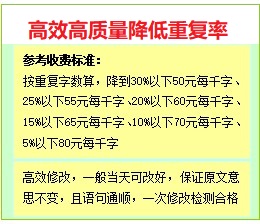洗衣机机盖注射模加工工艺设计及 CAM 模拟 本文有带图的PDF版本,需要可联系本站客服QQ893628136
摘 要
注塑模具是模具行业中应用最为广泛的模具之一,CAD/CAM 技术的应用范围也不断扩
大。本文档为洗衣机机盖注塑模的主要零件定制了加工工艺,其总体的技术路线是支承板
等结构支承件采用一般机械加工方法制造,型芯、型腔等成型零部件 采用数控加工制造,
并为数控加工的零件完成了计算机辅助制造(CAM)的仿真模拟。设计过程中主要运用 UG
和 AutoCAD 工具软件,充分发挥了计算机辅助设计与制造的优越性,实现了模拟加工设想。
第一章简要介绍了本课题的背景,设计对象和研究技术路线。第二章为支承板制定了
加工顺序和机械加工工序卡片。第三章 为成型零部件(型芯、型腔)及其型芯固定板制
定了数控加工的工艺流程,选 了加工的机床设备,制定了的数控加工工艺卡片。第四章
运用 UG NX5.0 的数控加工模块,创建和设置加工参数,最终完成了型芯、型腔的数控
加工仿真模拟。总体上,本文完成的洗衣机机盖注塑模的加工工艺清晰可行,数控加工的
工序经 CAM 模拟后证明其加工方案简单可行。
关键字: 注塑模 洗衣机机盖 加工工艺 CAM 仿真模拟
Abstract
The injection mold is one of most widespread molds in the mold profession, and the
CAD/CAM technology's applied scope also unceasingly expands. In this paper the processing
procedures of all the mold parts for a washer cover has been designed, the overall design prinple
being the supporting components such as the fulcrum table use the general machine-finishing
methods and the forming parts such as core and cavity use the numerical control processing, and
the computer-aided manufacturing (CAM) simulation for the forming parts of NC was finished.
The software tools of AutoCAD and UG were mainly used in the design and simulation, while
the advantages of computer-aided design and manufacturing was fully utilized
The first chapter introduced the design background, design object and methods of the final
design. The second chapter introduced the general machine-finishing principle and the
machining process card for the supporting plate was formulated. The third chapter focused on the
forming spare parts (core, cavity) and core-retainer plate, including the numerical control
processing procedure, the processing equipment and NC machining processing card. In the
fourth chapter the NC processing simulation of the core and cavity using UG NX5.0 NC
processing has been completed. In general, the designed manufacturing procedures and the
numerical control machining procedures of the washer cover injection mold components are
proper and feasible, and the CAM simulation has good visibility.
Keywords: Injection Mold; Washer Cover; Processing Procedure; CAM;Simulation
目录
摘 要 ................................................................. i
Abstract .............................................................. ii
目 录 ............................................................... iii
第一章 绪论............................................................ 1
1.1 引言 ........................................................... 1
1.1.1 塑料模具的种类与应用 ...................................... 1
1.1.2 我国模具工业的现状及发展趋势 ............................... 1
1.2 塑料模具 CAD/CAM 的意义 .......................................... 2
1.3 课题的突出和研究内容 ............................................ 3
1.3.1 课题的提出 ............................................... 3
第二章 模具结构零部件的普通机加工工艺设计 ................................ 7
2.1 模具加工工艺规程概述 ............................................ 7
2.2 模具加工方法与工艺流程 .......................................... 7
2.2.2 模具加工工艺流程 .......................................... 8
2.3 支承板的普通机加工工艺设计 ...................................... 8
第三章 模具成型零部件的数控加工工艺设计 ................................. 11
3.1 数控加工工艺分析............................................... 11
3.1.1 数控加工工艺的内容和特点.................................. 11
3.1.2 模具零件数控加工工艺性分析 ................................ 12
3.1.3 数控加工工艺方案设计 ..................................... 12
3.1.4 数控加工工艺方案设计的主要内容 ............................ 12
3.2 数控加工方案流程............................................... 13
3.2.1 数控加工工艺基本流程 ..................................... 13
3.2.2 UG CAM 加工基本编程流程 ................................... 13
3.3 型芯数控加工方案............................................... 14
3.4 型腔数控加工方案............................................... 15
3.5 型芯固定板数控加工方案 ......................................... 16
第四章 数控加工 CAM 模拟 ............................................... 18
4.1 UG CAM 概述 .................................................... 18
4.2 UG 编程基本流程 ................................................ 18
4.3 型芯数控加工流程............................................... 19
4.3.1 型芯 CAM 模拟 ............................................. 19
4.3.2 后处理输出 NC 程序 ........................................ 31
4.4 型腔数控加工流程............................................... 33
4.4.1 型腔 CAM 模拟 ............................................. 33
4.4.2 后处理输出 NC 程序 ........................................ 40
第五章 总结........................................................... 42
参考文献 .............................................................. 43
致 谢 ................................................................ 44
附录 NC 程序文件
机械加工工艺卡片 模具零件图
1.1 引言
第一章
绪论
1.1.1 塑料模具的种类与应用
不同的塑料成型方法采用原理和结构特点各不相同的成型模具,按照成型加工方法的
不同,可将塑料模具分为以下几类。
(1)注射模:注射模成型能成型形状复杂的制件及具有生产效率高的特点,在塑料
制件的生产中占有很大的比重。据统计,注射模的产量占世界塑料模具产量的一半以上。
(2)压缩模:又称压塑模,多用于热固性塑料制件的成型,但该方法成型周期较长、
生产效率低。
(3)压注模:主要用于热固性塑料制件的成型。
(4)挤出模:主要用于热塑性塑料的成型,可以成行各种塑料管道、棒材、板材、
薄膜以及电线电缆等,还可以对塑料进行塑化、混合、造粒、脱水等准备工序或半成品加
工。
(5)气动成型模:包括中空吹塑成型模、真空成型模与压缩空气成型模等。
除了上述介绍的几类常用的塑料成型模具外,还有泡沫塑料成型模、浇注成型模、滚
塑成型模、压延成型模、拉丝成型模以及聚四氟乙烯冷压成型模等。
首页 上一页 1 2 3 4 5 6 7 下一页 尾页 1/9/9
洗衣机机盖注射模加工工艺设计及CAM模拟(一)由毕业论文网(www.huoyuandh.com)会员上传。

